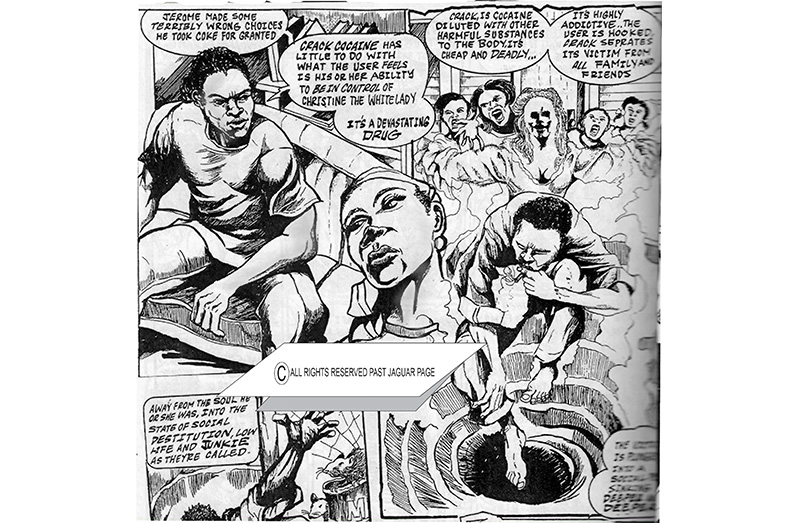SINCE the 1980s, Guyana has been described as a transit point for cocaine specifically (see National Geographic 1985, which highlights our involvement). This quest for economic backup in a world that was already demonstrating income-earning difficulties was noted in National Geographic, January 1989. There’s a map there that holds Guyana accountable.
During that period, and before, what many of us knew of cocaine was through popular music, like Swamp Dogg’s hit Sam Stone. Sam Stone was a Vietnam vet who was consumed by this drug and, as Swamp Dogg described, “was climbing walls while sitting in a chair”—weird stuff, more like a scene from The Exorcist. But it was joking about Swamp Dogg’s song that attracted the serious attention of a friend of my Godfather, who mentioned to me that there’s something people called narcotics—that it was worse than rum. Again, more like the evil spirits of The Exorcist.

Hard drugs started having their public self in Guyana in the early eighties. The taste of misery came when a close relative, much later, became a young adult victim. The comedy of it, if I can assume it to be comedy, was the engagement with the rehabilitation centres. The most popular of the two that I was directed to informed me that X was the fee per month. Additionally, I had to provide toiletries, writing materials, and other essentials. The shocker was that if the addict (the client) was brought in with all fees paid and the addict didn’t want to stay and walked out, it wasn’t the rehab’s responsibility.
I argued that in that case, I should get back my money. They disagreed, and we debated—with some compromises.
The fact about this scourge is that if a youth does not have parents or family ties who will extend funds to help, that youth will end up on the road in a much faster stage of deterioration. Because a mind infiltrated with narcotics is not easy on a family, most families throw them to the wolves.
We don’t cultivate cocaine farms and drug production distilleries to my knowledge—however, I could be wrong. There are locations under the authority of certain public institutions that can be purged.
In 2014, with a few colleagues, I co-founded a group named RESCU, where we visited schools to speak about the dangers, but we ran out of resources to reach all the locations we were invited to.
Drug addiction is a serious problem. Addressing it requires more than mere interactions with the most vulnerable. There are some other options under consideration. If things materialise, some concerned friends and I may just give it a shot. The impetus is the long list of adults who have passed, trying to manage not-so-easily infected minds. Some have lost their lives as a result.
We live in a country where there is hope that things will just disappear without our help. Not so in the real world. It takes a whole lot of effort, using diverse expressions to influence minds and commitment.
However, the state-administered Drug Court is an efficient and inspiring institution, capable of reaching, through collaboration, those who need it most. Throughout my journey, I have worked with this institution and other collaborating entities in the progressive movements required. All is never lost.



.jpg)










